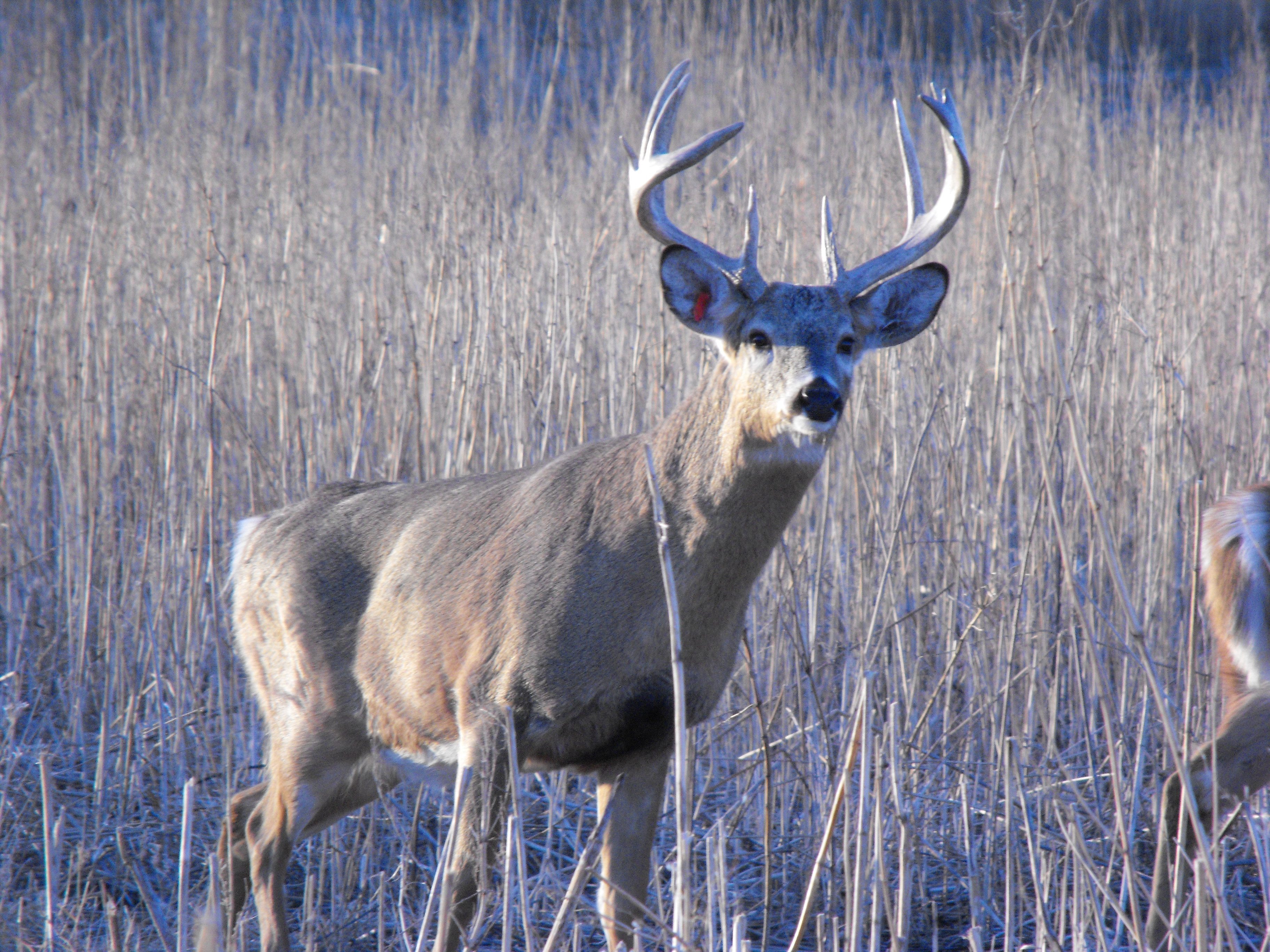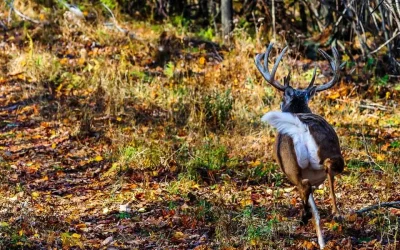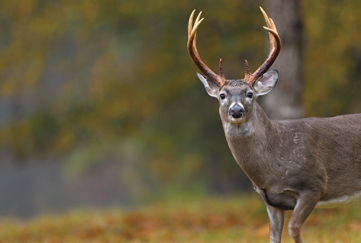The buck was at least two hundred fifty yards out and if something didn’t divert him, he would walk right into the shooting lane I had cleared during pre-season, well within bow range.
As he dropped into a swale, I cautiously took my bow from the holder, attached my release to the string and waited for him to come over the rise.
As he came back up on the trail, he glanced from side to side and then stopped, I knew he couldn’t smell me as the wind was in my face and before coming out had used every scentless product available, using a good cover scent before making my way to my stand. Once I was there, I checked the wind again, just to make sure it hadn’t changed.
I was sure I had done everything I needed to do, as I wasn’t moving; my tree stand was camouflaged, as were my bow, face, hands, clothing, backpack and boots.
The buck stopped, its head moved slowly from right to left, then raised and lowered his head, stomped the ground, snorted and that was the last I saw of him. I didn’t have any idea as to what has had spooked him; it just didn’t make any sense.
Somehow, the buck knew I was there but how could he do it, I was motionless, had my stand high in the tree and yet it had me pegged.
Anyone who has spent much time hunting deer had a similar experience and been busted by a deer’s keen senses. Most of us have spooked a deer and left scratching our heads, trying to figure out what happened.

Deer have keen senses; this buck was on full alert, using all its senses had spotted us just before it bolted into the heavy timber.
Prior to the following season, I spent a lot of time looking over my set up, trying to figure out what had happened.
I thought my tree stand was at a good height at a height that a deer was unable to look up and see me.
As I walked the trail towards where the deer was standing, I glanced back at my stand. When I reached the rise where the deer had spooked, I turned and to my surprise I was almost at the same eye level with my stand and my back drop was more open than I thought, allowing the buck to see the dark object that didn’t belong in that tree.
The following year, I made some big changes, relocated my tree stand and better understood the animal I was after.
My biggest change was to relocate my stand making sure it was high enough where the deer wouldn’t’ be able to see me. Earlier in the season, I opened up several trails and while doing this, surveyed my new stand location.
I made sure my stand was high enough where the deer wouldn’t look up and spot me, it was above the skyline and I had built up the backdrop behind the stand with branches I had cut from my shooting lanes, helping to break up my outline.
Now that my stand was in place, I looked for information on a deer’s senses, which would help me to understand them and become better at deer hunting.
Listed below is some of that information I learned about a deer’s senses.
“Eyes”
Hunters know that deer have excellent eyesight, but just how better is their eyes than ours is?
Researchers have did studies on a deer’s eyes and found that a deer’s eyes are five times better than a humans and it’s believed they are far-sighted and they have a wide field of view.
It was found that deer aren’t completely colorblind; having the ability to see some yellows and blues, but have trouble seeing reds and greens.
Their eyes, which protrude from their head, allow them to have 310 degrees peripheral vision. It’s their large pupils in their eyes and the membranes in the back of their eye, which allows them to see better in low light conditions than humans.
They also have the ability to detect the slightest movement and to get a better look at a stationery object, need to view it at different angles, that’s why a deer moves its head from side to side and up and down to get a better look at things
Studies indicate that deer’s eyes are oriented to pick up predator movement at or just below the horizon. Deer are less likely to pick up movement above the horizon, which means you need to put your stand above the horizon at a height where deer don’t pay much attention.
“Smell”
Research done at Mississippi and Georgia State, found a deer’s sense of smell, like a dog’s, can be anywhere from 500 to 1,000 times better than ours. In these studies, they found that whitetails have thousands of smell receptors in their nostrils in their mouths and perhaps even on the outside of their nose used to sort out different smells.
A deer’s brain, isn’t as large as ours is, but more of their brain is used to analyze what they’re smelling, which means, it can be tough to cover the human scent.
The best we can do is to use products that will cut our scent down, such as scentless soap, deodorant, shampoos and a cover scent.
“Hearing”
Studies done on deer indicate that a deer’s hearing isn’t much better than our hearing, what they do have to make their hearing better are their two large ears, with large surface areas, which allow them to detect sound. The muscles on the ears allow them to move their ears independently of each other, like small radar systems, allowing them to pinpoint sounds.
Deer are familiar with their surroundings and the day-to-day sounds they normally hear with the sound of a human walking not being one of these familiar sounds.
Some believe if you change your pace, use a grunt tube or allow your rattling antlers to click together as you approach your stand that these will be familiar sounds and not put the deer on alert.




0 Comments